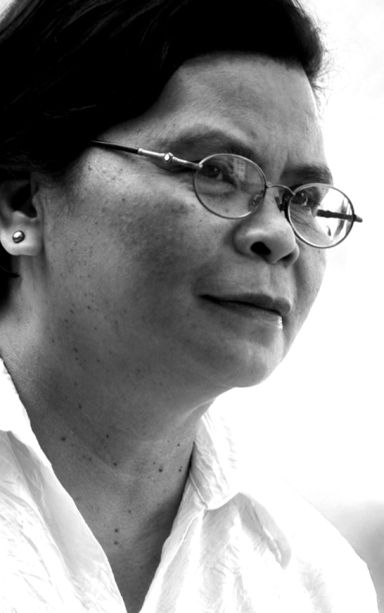
DELA CERNA
The intense fear inflicted by Martial Law sent various signals. Some slowly left the country, private schools especially Catholic schools turned over their schools to another congregation. I am familiar with three cases of such schools.
St. Catherine’s School in Carcar, Cebu, and St. Joseph’s Academy in Mandaue run by the ICM were turned over to the archdiocese in 1976 who eventually offered St. Catherine’s School to the Dominican Congregation. The third school, St. Elizabeth Academy in Janiuay, Ilolo, (incidentally also run by the ICM) was closed just right after Edsa revolution.
The turnover of St. Catherine’s School was a great shock to everyone, the whole town, the students, and the alumni for there were no prior notices nor hints of the turnover. Up to the present, the only reason I hear about the turnover is a change in social orientation. I join the lamentation of the alumnae/alumni of the loss of St. Catherine’s School. True, the edifice is still there, but the academic and social culture engendered by the ICM is no longer there. Even the whole town was also affected by the absence of the school that was one of the icons of the town. It has produced outstanding leaders, influential professionals, active priests and nuns.
The case of St. Elizabeth Academy in Janiuay, a reliable source narrated to me the whole story leading to its closure. The administration of the congregation was informed that the NPA used to hold meetings in one of the facilities of the school. The school was one of the few schools that transformed the community. In fact, it was ahead in the so-called nationalist and scientific education which was the demand of the activists.
This so-called change of social orientation also caused the closure of the college departments of some schools in Metro Manila and in Cebu City. For those that did not close their college departments, their Music department was the first to go. Today students who want to pursue a career in music cannot find any school offering it and end up with tutorials. It is so ironic that music is our greatest gift as a people and it is being minimalized in the curriculum. In the elementary and secondary curriculum, it is subsumed in the subject called Makabayan and is given only a few minutes every meeting.
Martial Law period was not just all rallies or strikes. Each sector had its program or campaign — workers, farmers, fisherfolks, lawyers, students, teachers, drivers, etc. I concentrated on the education campaign, first by co-organizing and coordi nating the Cebu Association of Social Studies Educators (CASSE) from the 1970s to the 1980s for it was in Social Studies that the campaign was most relevant. Every last Saturday of the month, we tackled content and strategy in teaching Social Studies as a way to counter Marcos’ ideology. Then in the early 1980s just right after the assassination of Ninoy Aquino, the Education Forum was organized to conscientize teachers of different subjects — Communication (English and Pilipino), Philippine History, Socio-Economics, Science and Mathematics. Conscientization came in form of institutes, and the Teacher Assistance Program, which published every week a pamphlet on the current issue and a monthly booklet of the issues of the month entitled “Issues Without Tears.” The booklet was a simplified discussion on current issues since teachers did not have all the time to attend and participate in forum or symposium. Fortunately, members and leaders of the Education Forum were also writers so they came up with books and other publications on alternative education and education for national consciousness.
One group that is almost invisible during Martial Law was the women’s movement which faced a two-faced struggle, activism and feminism. Women’s groups of different political orientation were one in their struggle for women’s rights in all fields, and many of them contributed immensely to the struggle for social justice and social transformation. Women’s movement would grow stronger even after Edsa, and this was the scenario in Cebu in the 1990s. I am fortunate to have met some leaders of the movement as subjects of my dissertation on feminist leadership in Philippine setting.
There are other stories of involvement from other sectors during Martial Law. Whatever their stories are, there is the pattern of the struggle, the losses and the victories, the healing of the wounds and the moving on after Martial Law.
Disclaimer: The comments uploaded on this site do not necessarily represent or reflect the views of management and owner of Cebudailynews. We reserve the right to exclude comments that we deem to be inconsistent with our editorial standards.
